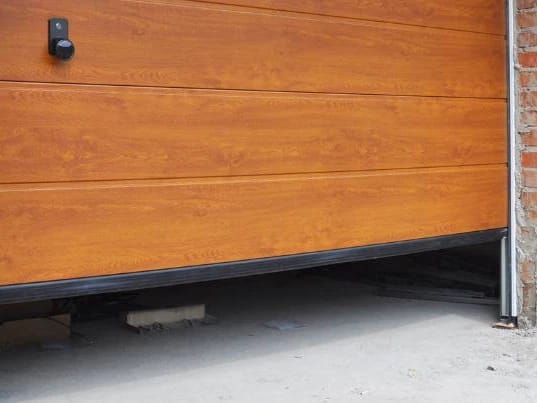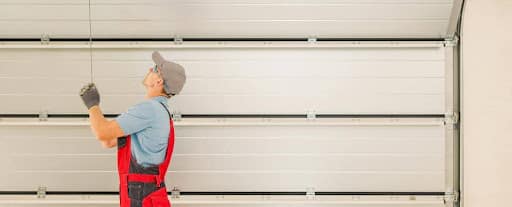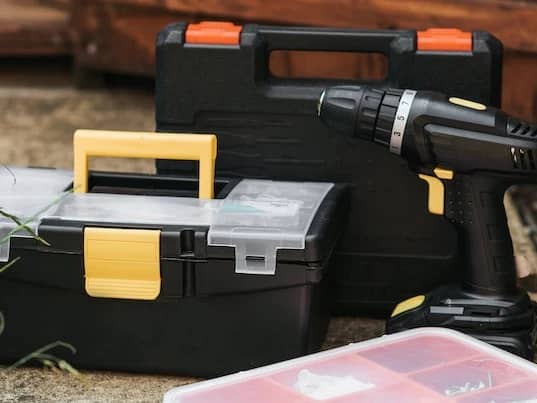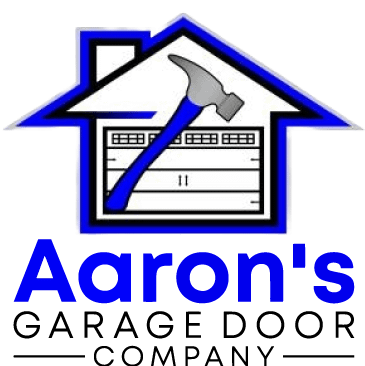Is your garage door opener not working right? Many homes have this issue.
This article will show you how to fix common problems with your garage door opener. Keep reading for easy solutions.
How it works
Key Takeaways
- To fix a garage door opener, start by checking the remote control, wall switch, and power supply to ensure they’re functioning correctly.
- Clean and align sensors regularly to prevent blocked signals that can cause the door to malfunction.
- For noisy or rough operations, lubricate or replace worn – out rollers and inspect springs for damage but call a professional for spring repairs since they are under high tension.
- If your garage door opens slowly or unevenly, clean the tracks and lubricate moving parts like rollers and springs. Tighten any loose bolts or screws for smoother operation.
- Update or replace an old garage door opener if it’s failing often. Newer models offer better efficiency, security features, and may solve persistent issues with doors not opening/closing properly.
Common Garage Door Opener Problems and How to Fix Them
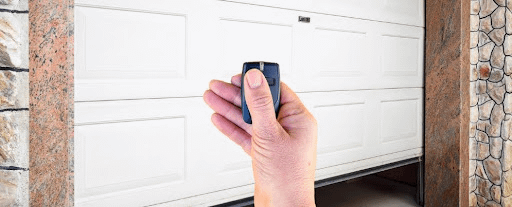
Is your garage door opener giving you trouble opening or closing? Blocked sensors, broken springs, and roller issues can be fixed by troubleshooting tips such as testing the opener, inspecting springs, and lubricating or replacing rollers.
Don’t forget to consult a professional for major repairs.
Trouble Opening or Closing
Garage doors that won’t open or close properly can signal several issues. The problem might lie with the garage door opener, where a malfunctioning remote control or a glitch in the wall switch prevents smooth operation.
Check both to ensure they’re working correctly and inspect the power supply for any interruptions.
Faults within the garage door system itself, such as misaligned tracks, worn torsion springs, or obstructed door sensors, often cause opening and closing troubles. Regularly examine these components for signs of wear and tear and clear any debris blocking the door’s path.
Ensuring safety sensors are correctly aligned also plays a crucial role in seamless door movement.
Routine maintenance is key to solving most problems before they stop your garage door from opening or closing.
Blocked Sensors
Moving from issues with opening or closing, blocked sensors often stand as a common culprit behind malfunctioning garage door openers. Dirty or misaligned photo eye sensors can prevent the garage door from operating correctly.
These sensors are designed to stop the door if anything interrupts their signal to ensure safety. Keeping them clean and aligned is crucial.
Dust and debris frequently block these sensors, causing the garage door to refuse to close completely or even open in some cases. Simple cleaning with a soft cloth can remove any obstruction.
Check for alignment too; even slight shifts can disrupt the system’s functionality. Correcting these issues often restores normal operation without needing professional garage door services.
Broken Springs
Broken springs can stop your garage door from opening or closing correctly. These springs play a vital role in balancing and lifting the heavy weight of the door. If you notice a sudden loud noise, like a bang, from the garage, it’s likely a spring has snapped.
It’s unsafe to try fixing broken springs yourself due to the high tension they’re under. Always call in a professional garage door technician for repair.
Next up, let’s discuss roller issues that might also affect your garage door opener’s efficiency.
Roller Issues
If you notice that your garage door is making unusual noises during operation, it could be due to issues with the rollers. Rusted or worn-out rollers can cause friction and loud squeaking sounds as the door moves up and down.
Regularly inspecting and maintaining the rollers by lubricating them can prevent such problems from occurring. Additionally, make sure to replace any damaged or misaligned rollers promptly to ensure smooth and quiet operation of your garage door.
To fix roller issues:
– Lubricate or Replace Rollers
Dying Opener
If your garage door opener is showing signs of dying, such as intermittent operation or a slow response to commands, it may be time for a replacement. To address this issue, consider updating or replacing the opener with a new and more efficient model.
This upgrade can enhance the security and convenience of your garage access, ensuring smooth and reliable functionality without the frustration of dealing with a failing opener.
Alternatively, if you have experience with electrical systems and feel comfortable doing so, you can meticulously inspect the circuit breaker and power supply to rule out any issues stemming from these components before making a decision about replacing the opener.
Unusual Noises
Unusual noises coming from your garage door opener can be a sign of underlying issues that need attention. When you hear grinding, scraping, or banging sounds, it may indicate worn-out gears, loose hardware, or misaligned components.
Inspect the chain or belt drive for any signs of damage and ensure that it is properly lubricated to reduce friction. If you notice persistent squeaking or screeching, the rollers and hinges may need lubrication as well.
Rattling or vibrating noises could point to loose nuts and bolts which should be tightened to stabilize the opener. Regular maintenance and timely repairs can help address unusual noises before they escalate into more serious problems.
Uneven Door
To make sure your garage door is functioning properly, it’s important to address the issue of an uneven door promptly. An uneven garage door can put strain on the opener and cause further damage if left unattended.
Use a level tool to check the alignment of the door, ensuring that it is balanced and operating smoothly. Tighten any loose bolts or screws along the tracks and inspect the cables for any signs of wear or damage which could be causing an imbalance in the door.
If you notice any issues with alignment or balance, it may be best to consult a garage door technician to properly realign your garage door for optimal performance.
Slow Opening
If your garage door opens slowly, it could be due to issues with the rollers or lack of lubrication. Clean and lubricate the rollers routinely to ensure smooth operation. It may also help to check for any debris or obstructions in the tracks that could be slowing down the opening process.
Inspecting and maintaining these components will prevent future problems and keep your garage door operating smoothly. Regular care and attention can help you avoid slow openers that might cause inconvenience or frustration when you need quick access to your garage.
Transmitter Problems
If your garage door opener is experiencing transmitter problems, there may be several issues at play. Start by checking the batteries in the remote to ensure they are functioning properly.
Next, inspect for any obstructions around the antenna on the opener as this can interfere with the signal transmission. It’s also essential to reprogram or sync your remote and keypad according to the instructions outlined in your owner’s manual.
To troubleshoot further, try clearing any dust or debris from both the transmitter and receiver. Sometimes, a simple cleaning can resolve connectivity issues between these components.
Keypad Not Synced
To troubleshoot a garage door opener keypad not synced, start by checking the batteries in the remote. If they are old or running low, replacing them can often resolve syncing issues.
Make sure that the keypad is within range of the opener and that there are no obstructions blocking the signal. If everything seems to be in order, refer to the manual for specific instructions on how to sync the keypad with the opener.
Alternatively, you can consult a professional if you’re unable to resolve the issue on your own.
If troubleshooting doesn’t solve the problem and your garage door opener keypad remains unsynced, consider reaching out to a professional who has experience dealing with such technical problems.
Troubleshooting Tips for Common Garage Door Opener Problems
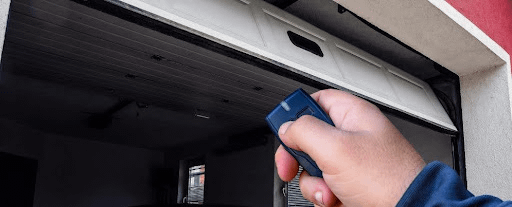
Test the opener regularly to ensure smooth operation, and consult a professional for major repairs. To learn more about fixing garage door opener problems, continue reading below.
Test the Opener
To ensure the garage door opener is functioning properly, follow these steps:
- Press the wall – mounted control button to open and close the door.
- Use the remote control to operate the door from different distances and angles.
- Manually open and close the garage door to check for smooth operation.
- Test safety features such as auto – reverse by placing an obstacle in the door’s path during closure.
- Verify that all lights on the opener respond correctly, indicating power supply and functionality.
- Listen for any unusual sounds or erratic behavior during operation.
These tests will help diagnose any issues with your garage door opener.
Check Sensors
When troubleshooting your garage door opener, ensure to check the sensors for any issues. Here are some tips on how to do this:
- Inspect sensor alignment: Ensure that the sensors are properly aligned facing each other. They should be parallel to each other and not misaligned.
- Clean the sensors: Use a soft, clean cloth to wipe the sensors and remove any dirt, dust, or debris that may be obstructing their functionality.
- Check for obstructions: Look around the sensors and make sure there are no items blocking their path, such as dirt, leaves, or spider webs.
- Test sensor connections: Inspect the wiring connections of the sensors to ensure they are securely connected without any loose or damaged wires.
- Reset sensor position: Sometimes repositioning the sensors slightly can help with alignment issues and improve functionality.
- Verify power source: Check if the sensors are receiving power by ensuring that they are properly connected to a power source and there are no electrical issues.
- Test sensor functionality: Utilize the manual testing feature on your garage door opener to determine if the sensors are working as intended.
- Replace faulty sensors: If after troubleshooting, you find that your sensors are still not functioning correctly, consider replacing them with new ones to ensure optimal performance.
By thoroughly checking and addressing sensor issues, you can troubleshoot problems with your garage door opener effectively and ensure smooth operation in the future.
Inspect Springs
Inspecting the springs is an essential step to ensure the smooth operation of your garage door opener. Here are the steps to inspect the springs thoroughly:
- Look for any signs of rust or corrosion on the springs, as this can weaken them over time and lead to breakage.
- Check for any gaps, cracks, or misalignments in the springs that could indicate wear and tear.
- Test the tension of the springs by lifting the door manually and observing whether they provide balanced support.
- Lubricate the springs with a silicone – based lubricant to prevent friction and maintain their flexibility.
- Ensure that the springs are properly secured to their mounting points without any loose connections.
- If you notice any significant damage or wear on the springs, it’s advisable to consider replacing them before further issues arise.
- Inspecting your garage door opener’s springs regularly will help identify potential problems early on and prevent unexpected malfunctions down the line.
Lubricate or Replace Rollers
To keep your garage door opener running smoothly, it’s crucial to pay attention to the rollers. Lubricating or replacing them can greatly improve the functionality of the door. Here are some steps for effectively maintaining the rollers:
- Regularly lubricate the rollers with a silicone – based spray to reduce friction and ensure smooth movement.
- Inspect the rollers for signs of wear and tear such as cracks or chipping, and replace them if necessary.
- Clean the tracks to remove any debris that may be affecting the roller movement.
- Check for proper alignment of the rollers to prevent strain on the opener motor.
- Tighten any loose hardware associated with the rollers to maintain stability.
By following these steps, you can prolong the life of your garage door opener and prevent potential issues in the future.
Update or Replace Opener
When experiencing issues with your garage door opener, consider updating or replacing the opener for an efficient and reliable solution. Here are the steps to update or replace your garage door opener:
- Assess Compatibility: Ensure that any new opener is compatible with your existing garage door system, including the type of door, sensors, and any additional features.
- Research Opener Options: Look into different types of openers available in the market such as chain-drive, belt-drive, or screw-drive openers. Consider factors like noise level, speed, and power efficiency before making a decision.
- Gather Necessary Tools: Before starting the replacement process, gather the required tools such as a ladder, wrenches, screwdrivers, and a power drill to facilitate the installation.
- Turn Off Power: Disconnect power to the garage door opener by locating the circuit breaker or unplugging it from its power source.
- Remove Old Opener: Uninstall the old opener by following manufacturer instructions and disconnecting it from the ceiling brackets.
- Install New Opener: Carefully install the new opener according to manufacturer guidelines provided in the installation manual. This entails securing it to the ceiling brackets and wiring it properly.
- Test Operation: Once installed, test the new opener’s functionality by opening and closing the garage door multiple times to ensure smooth operation without any issues.
- Adjust Settings: Fine-tune settings on your new opener such as travel limits, force adjustments, and programming remote controls if necessary.
- Professional Assistance (Optional): Seek professional assistance if you encounter challenges during installation or if you prefer expert help to ensure a seamless replacement process.
By updating or replacing your garage door opener when needed, you can enhance its functionality and reliability for smooth daily operations without unexpected issues.
Fix Alignment Issues
To fix alignment issues with your garage door opener, follow these steps:
-
- Ensure that the tracks on both sides of the door are parallel and at the same height.
- Use a level to check the horizontal track’s alignment and adjust if necessary.
- Align the vertical track by loosening the bolts, tapping it into place, and tightening them again.
- Verify that the rollers are in their tracks and adjust as needed for proper alignment.
- Check for any obstructions or debris that could be impacting alignment.
These steps can help ensure that your garage door operates smoothly and safely.
Next, we’ll explore how to prevent future garage door opener problems.
Clean and Lubricate for Slow Opening
To address slow opening issues with your garage door opener, you can take the following steps:
- Clean the tracks and rollers using a damp cloth to remove any built – up dirt or debris that may be causing friction.
- Apply a silicone-based lubricant to the rollers, hinges, and springs to ensure smooth movement. Avoid using oil-based lubricants as they can attract more dirt.
- Inspect the cables for any signs of wear or damage and replace them if necessary to prevent further issues.
- Tighten any loose hardware such as bolts and brackets to ensure the door operates smoothly without unnecessary vibrations.
- Test the door’s balance by disconnecting the opener and manually operating it to ensure it moves up and down without resistance.
By following these maintenance steps, you can ensure that your garage door opener functions optimally, allowing for smoother and faster door operations while preventing potential future problems.
Next: Troubleshooting Tips for Common Garage Door Opener Problems
Replace Remote Batteries
To ensure your garage door opener remote continues to function properly, be sure to replace the batteries regularly. Here are the steps to guide you through this simple but essential task:
- Use a small screwdriver to open the remote control battery compartment.
- Take out the old batteries and dispose of them properly.
- Insert the new batteries according to the correct polarity markings, usually labeled inside the remote.
- Close the battery compartment securely with the screwdriver.
Regularly replacing your remote batteries will keep your garage door opener functioning smoothly and prevent any unexpected issues during operation.
Refer to Manual for Keypad Issues
If you experience issues with your garage door opener keypad, refer to the manual for troubleshooting steps. The manual provides specific instructions and guidance tailored to your keypad model. Follow these tips for resolving keypad problems:
-
- Check the battery compartment to ensure batteries are correctly inserted and not corroded.
-
- Clean the keypad surface and buttons to remove any dirt or debris that may be affecting functionality.
-
- Re-sync the keypad with the opener by following the manual’s step-by-step instructions.
-
- Inspect the wiring connections between the keypad and opener to ensure they are secure.
-
- If all else fails, consider contacting the manufacturer’s customer support for further assistance.
It’s important to consult the manual for detailed solutions tailored towards addressing keypad-related issues effectively without causing any damage.
Consult a Professional for Major Repairs
When facing significant garage door opener issues, seeking professional help can ensure proper repair. Consult a certified technician for comprehensive assessment and expert resolution. A professional is equipped to diagnose intricate problems and provide accurate solutions.
They have the expertise to handle complex repairs safely and efficiently, ensuring the longevity of your garage door opener. Engage a professional for peace of mind and reliable results, allowing you to confidently resume normal operation of your garage door system.
Aaron’s Garage Door Company can help! We offer free advice to help you troubleshoot minor issues and determine if a professional visit is necessary. Contact us for a consultation and get your garage door opener back on track.
For garage door repair, garage door technician, or garage door opener services, contact Aaron’s Garage Door Company today!
How to Prevent Future Garage Door Opener Problems
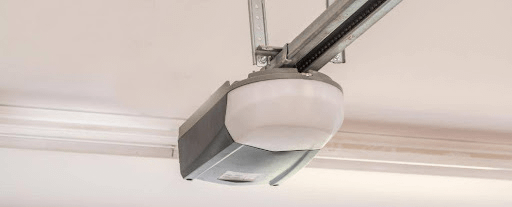
Prevent future garage door opener problems by maintaining and inspecting the system regularly. Keep parts aligned properly, replace old batteries, and follow safety guidelines to avoid serious injury.
Regular Maintenance and Inspection
Regular maintenance and inspection are crucial for keeping your garage door opener working smoothly. Inspect the springs, rollers, and cables for any signs of wear and tear, as well as loose hardware that may need tightening.
Regularly lubricate the moving parts to minimize friction and ensure seamless operation. Additionally, check the opener’s electronic components such as sensors, remote batteries, and wall control panel to guarantee they are functioning properly.
It is important to stay proactive with regular maintenance tasks to prevent unexpected issues from arising in the future. Taking care of these small details will go a long way in ensuring that your garage door opener remains reliable and functional for years to come.
Don’t Attract Dirt to Sensors
To prevent issues with the garage door opener sensors, it’s important to keep them clean from dust and debris. Regularly wipe down the sensors with a soft cloth to remove any dirt or grime that could obstruct their function.
Ensure that the area around the sensors is free from leaves, cobwebs, and other potential obstructions. By maintaining clean sensors, you can help ensure smooth and uninterrupted operation of your garage door opener.
Additionally, using a mild detergent and water solution can help remove stubborn dirt without damaging the sensors. Be sure to dry them thoroughly afterward to prevent any moisture-related issues.
Keep Parts Aligned Properly
Proper alignment of the garage door parts is crucial for smooth operation. Misaligned tracks, rollers, or sensors can cause issues with opening and closing. Use a level to ensure that the vertical and horizontal tracks are plumb and aligned.
Check that the rollers are properly set within the track and not rubbing against its sides. Ensure that the sensors are facing each other directly without any obstructions, keeping them aligned for accurate detection.
Maintain proper alignment of all components to prevent unnecessary strain on the system and potential damage to your garage door opener. Regularly inspect and adjust any misalignments to keep everything running smoothly for longer periods between repairs.
Replace Old Batteries
To ensure your garage door opener continues to function smoothly, it’s essential to replace old batteries in the remote regularly. In most cases, when the remote works intermittently or not at all despite being in close proximity, it’s a clear sign that the batteries are running low.
By taking prompt action and replacing the old batteries with fresh ones, you can avoid unnecessary frustrations and disruptions to your daily routine. Keeping spare batteries on hand is also a good practice so that you can quickly swap them out when needed.
Regular maintenance of your garage door opener includes replacing old batteries in the remote. Ensuring that the power source for operating your garage door is reliable will prevent any unexpected inconveniences caused by dead or dying batteries.
Manually Open Door in Case of Power Outage
In case of a power outage, you can manually open your garage door by pulling the red emergency release cord located above the door. This cord disengages the opener from the door and allows you to manually lift it.
Make sure to pull the cord straight down and then back towards the motor to disengage it properly, allowing for smooth manual operation. Keep in mind that you will need to re-engage the opener once power is restored by pulling down on the cord towards the door until it clicks into place.
Remember not to try opening or closing your garage door using its motor during a power outage as this might cause damage or injury due to lack of proper functionality.
Avoid Serious Injury by Following Safety Guidelines
Following safety guidelines is essential to prevent serious injuries when working with garage door openers. Always disconnect the power source before conducting any maintenance or repairs on the opener.
Additionally, never attempt to adjust or repair the springs, cables, or other mechanical parts without proper knowledge and professional assistance. It’s crucial to wear protective gear such as gloves and safety glasses to avoid any potential accidents during maintenance tasks.
Conclusion
Fixing garage door repair issues is simple with the right know-how. Troubleshooting and preventive maintenance can make a huge difference. Regular inspection and addressing problems promptly can keep your garage door opener running smoothly for years to come. Making small repairs now will help avoid major malfunctions down the line, saving you time and money in the long run. If you’d like more information on garage door opener maintenance, contact us.
FAQs
1. Why won’t my garage door opener work?
Your garage door opener might not work due to several reasons, such as problems with the garage door springs, cables, or a power surge that has disrupted the system. Checking these parts can help identify the issue.
2. How do I fix a garage door opener that doesn’t close the door all the way?
If your garage door doesn’t close all the way, adjusting the limit switch might solve the problem. This switch tells your opener how far to move the door to close it properly.
3. What should I do if my garage door remote stops working?
First, check other lights and devices in your home to ensure there isn’t a power issue. If everything else is working fine, try replacing the batteries in your remote or reprogramming it according to the manufacturer’s instructions.
4. Can rusted rollers cause my garage door opener to malfunction?
Yes! Rusted rollers can hinder smooth operation and cause strain on your garage door opener. Cleaning them or applying lubricant may improve their movement and functionality.
5. What are common signs of needing a repair for my garage door cables and springs?
Signs you need repairs include noticeable wear like fraying cables or stretched springs, unusual noises during operation, or if your garage most openers struggle more than usual while lifting or lowering the door.
